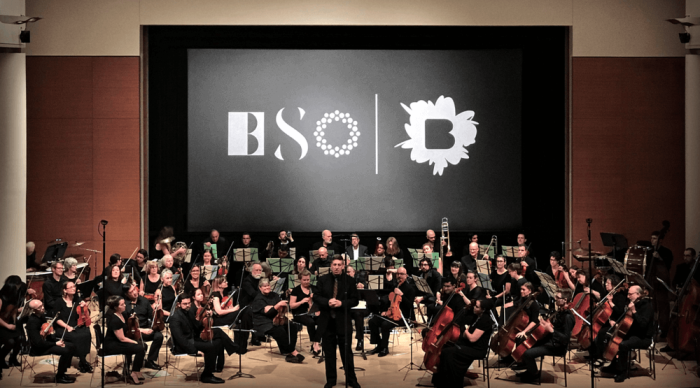On a tour of Rikers Island, there’s evidence of Mayor Bill de Blasio’s efforts to reform the prison complex. But there’s also clearly lots more to be done.
Jack Michael Moussignac, 35, is a Bronx resident who says he’s been in and out of the criminal justice system since age 20. On the outside, he’d hope to leave the past behind him but soon get “sucked into the old habits,” he says.
That past caught up with him once again last year, when he was arrested for criminal possession of a weapon while on parole. He’s now spent nearly a year back on Rikers Island, waiting to get sent upstate.
Moussignac says he is “recognized” at Rikers — he knows inmates from past bids, sees them in the yard. He’s familiar with the place, which he says has its benefits, though he’s troubled by the repeat visits.
This time, he says he’s noticed a difference in the facility. Moussignac is held in the George R. Vierno Center, or GRVC, one of the jails on Rikers Island and a once-troubled facility where refurbished housing units are part of attempts at improving previously horrible conditions.
Due to increased use of educational and social service classes and renovated housing units, the Department of Corrections says, the “Beacon units” of GRVC have not had any stabbings or slashings, and violence facility wide has dramatically dropped.
Jailhouse changes
This is the picture the Department of Correction would like to paint of the future of Rikers Island, the infamous centerpiece of New York City’s jail system that has been largely impervious to reform efforts and attempts from politicians to close it.
That tension has been on display recently. Last month the administration announced a multi-year plan to move adolescents off Rikers, a lauded effort. And last week, a correction officer was slashed by an inmate elsewhere on the island, which union officials say is an example of continued violence.
Members of amNew York’s editorial board toured GRVC recently to view the reform attempts as part of an ongoing series on Rikers Island.
We met Moussignac during a tour, a carefully curated before-and-after view of the Beacon units.
The “before” was visible in an empty un-refurbished housing unit. It was darkly lit, with two stories of cells surrounding a day room, squat drab benches and a single square TV the only furniture. Water continued to drip in the shower facilities, though the unit had been empty for months.
If you’re expecting the “after” to be a vision of Google-office design, don’t get too excited. But the new Beacon units have a fresh paint job, better lighting, and three flatscreen TVs (enclosed in cages). Inmates listen via headsets, avoiding the constant blare of a single TV. Cell doors have chalk paint allowing inmates to write their names and jobs, more than a number. Benches are replaced by stools (bolted to the floor).
Another aspect of the new units is programming — classes on issues such as anger management and computer skills, now available some five hours a day, said correction officials, as opposed to a few times a week.
Moussignac says this makes a difference, changing “the attitude” of inmates. Less chance to get pissed at the guy sitting next to you on a bench all day, and something to help prepare you for later. Moussignac has taken advantage of the new programs, including a widely publicized debate with Columbia University students this spring about the benefit of plea deals.
Moussignac points to the hours of classes as a key difference between violence problems at Rikers and “upstate,” where inmates do long stays and have plenty to do. Rikers Island is almost exclusively for those awaiting trial. The boredom and relative lack of stakes for inmates who attack each other, Moussignac says, leads to violence.
DOC says the Beacon units are working. For the last fiscal year, GRVC (largely made up of Beacon units) has experienced decreases in inmate fights, assaults on staff, and uses of force by corrections officers.
“Nothing positive” behind bars
In our brief time on the island we saw some of the sessions and new day rooms, where inmates looked bemusedly at worksheets or Janga towers, glancing up at the visitors. Just more people watching them.
What we didn’t see: the euphemistically named “punitive segregation units,” otherwise known as isolation. The Department of Correction has ended punitive segregation for 16 to 18-year-olds, though last month corrections officials asked for a fourth extension in ending the practice for 19-21 year olds, despite Board of Corrections regulations requiring them to do so.
We didn’t see the notoriously dangerous juvenile detention facilities, or mental health wards, which are reported to be far less visitor-ready than GRVC. We didn’t see the lockdowns, which put inmates back in cells and cancel all that great programming.
We don’t know whether the Beacon changes will be enough to break the cycle of jail stints for someone like Moussignac, who seems eager to make this visit his last.
There’s “nothing positive about jail,” Moussignac says. Outside, he hopes to start college courses.
For now, he’s here — in the tiny cells, in the day rooms, contemplating the often-stifling heat. Where silhouettes of black hands mark the entrance to housing units, not a mural but locations for inmates to place their real palms to be searched upon entering and exiting.
When the classes and sessions end, it’s back to a cell so hot these summer months that Moussignac says he sleeps nights on the floor. A little draft comes in under the door.
This is amExpress, the conversation starter for New Yorkers.

















